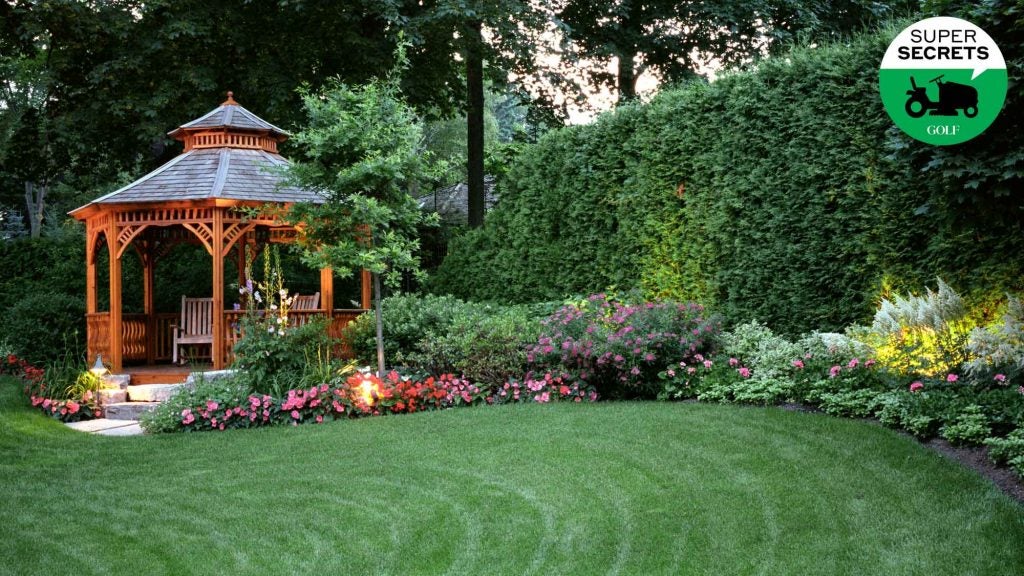Lawns, like golf courses, are grassy playgrounds that call for constant upkeep. Sometimes, they also require renovations. How can you tell when it’s time to redo the grounds around your home? What are the pitfalls and possibilities? In a twist this week, we turned not to a superintendent but to a turf-care expert from another field.
Matt Blashaw is a licensed contractor, avid golfer and partner with the lawn-care product company, Spectracide. He’s also the host of Yard Crashers, a reality TV show on the DIY Network that focuses on backyard makeovers. With summer underway and home-improvement projects at the top of mind, we asked Blashaw to tackle 6 common lawn-renovation questions. Here are his keys to getting the job right.
1. How frequently should you renovate your lawn?
“Everyone thinks lawns last forever,” Blashaw says. In reality, the lifespan for most lawns is “roughly seven to 10 years.” Prolonging that span requires consistent TLC, “including fertilization, de-thatching and insect abatement.” Take care of those tasks properly, Blashaw says, and your lawn might well outlast you.
2. What are easy ways to beautify a lawn without tearing it up and redoing it altogether?
One word: mounding. OK, a few more words. “Put in some bender board,” Blashaw says, referring to flexible edging products that allow you to shape attractive borders. “Create curvy hillsides, bring in boulders and statues, and create your own little rockscape for your yard.” Perennials can also punch up the aesthetics without requiring a ton of extra labor. The Japanese maple is one of Blashaw’s favorites because it brings “visual interest” but doesn’t demand intricate landscaping or a motherlode of maintenance.
3. What are the most common rookie mistakes?
Every lawn needs irrigation. The problem, Blashaw says, is that many people over-water their lawns when they’re in bad shape. As a general rule, he says, yards should get two-to-three inches of water per week. On his own property, Blashaw says he waters before 10 a.m. every other day for about 10 minutes. Planting the right grass type is another no-brainer that many homeowners fail to consider. Ditto soil tests, especially to check for acidity.
4. What was the most disastrous lawn-care renovation you’ve encountered?
“I was once working with a guy who didn’t look into the area he was in,” Blashaw says. “He put in St. Augustine, one of the priciest kinds of grasses, often found on golf courses, and he had too steep of a hill. He also had very acidic, rocky soil that was not good for the lawn itself and he didn’t amend it properly. And he hired the cheapest guys to lay the grass and just threw it onto the soil. He called me after two months to say that all of his grass was dying. We were able to save half of it, but about $4,000 went down the drain.”
5. Some people say that you should never spend more than one-third of your income on housing. Is there a similar rule-of-thumb for lawn renovation? How much is too much to spend?
So much depends on the house itself and the neighborhood that it’s hard to come up with a strict rule. But like a swimming pool, Blashaw says, a nice yard adds value to your home, upward of $50,000 to $75,000 in some cases. Any money you put in, you’re likely to get back. At the same time, Blashaw says, “don’t put more than $25,000-$35,000 into a backyard in a house you’re going to sell in the next couple of years.” If you plan on staying put for a while, “it’s always a good idea to invest in your yard, even if it’s just minor adjustments.”
6. What’s the first thing you should do when you embark on a renovation?
For starters, get a 3-D rendering of the design, Blashaw says. It will cost you up front, likely in the neighborhood of $800 to $1,200. But it will save you time and money in the long run.
“I’ve had people ask me to do things, and then I’ll show them the 3-D model and they change their minds and fine tune their designs based on that.”
When it comes to the labor itself, Blashaw recommends interviewing at least three contractors or landscapers. As part of the interview, ask them to point you to a project they’re currently working on. Visit the site. Does the crew appear hardworking? Are the grounds tidy and organized? Trash-strewn?
“If they’re proud of their job site and environment, they’ll be perfectly fine to let you come look, so you can check their credibility and decide if they’re the right fit for you.”
